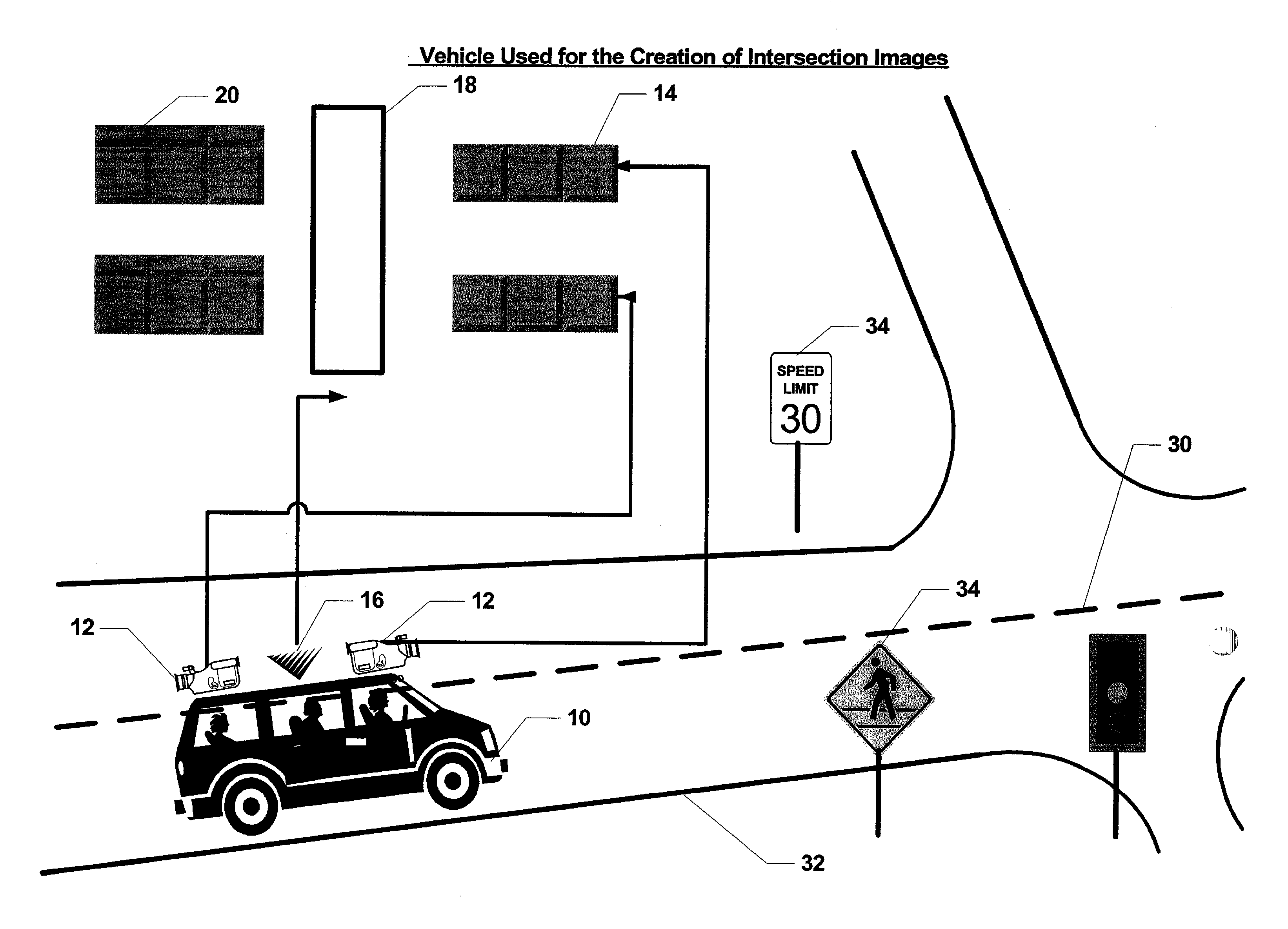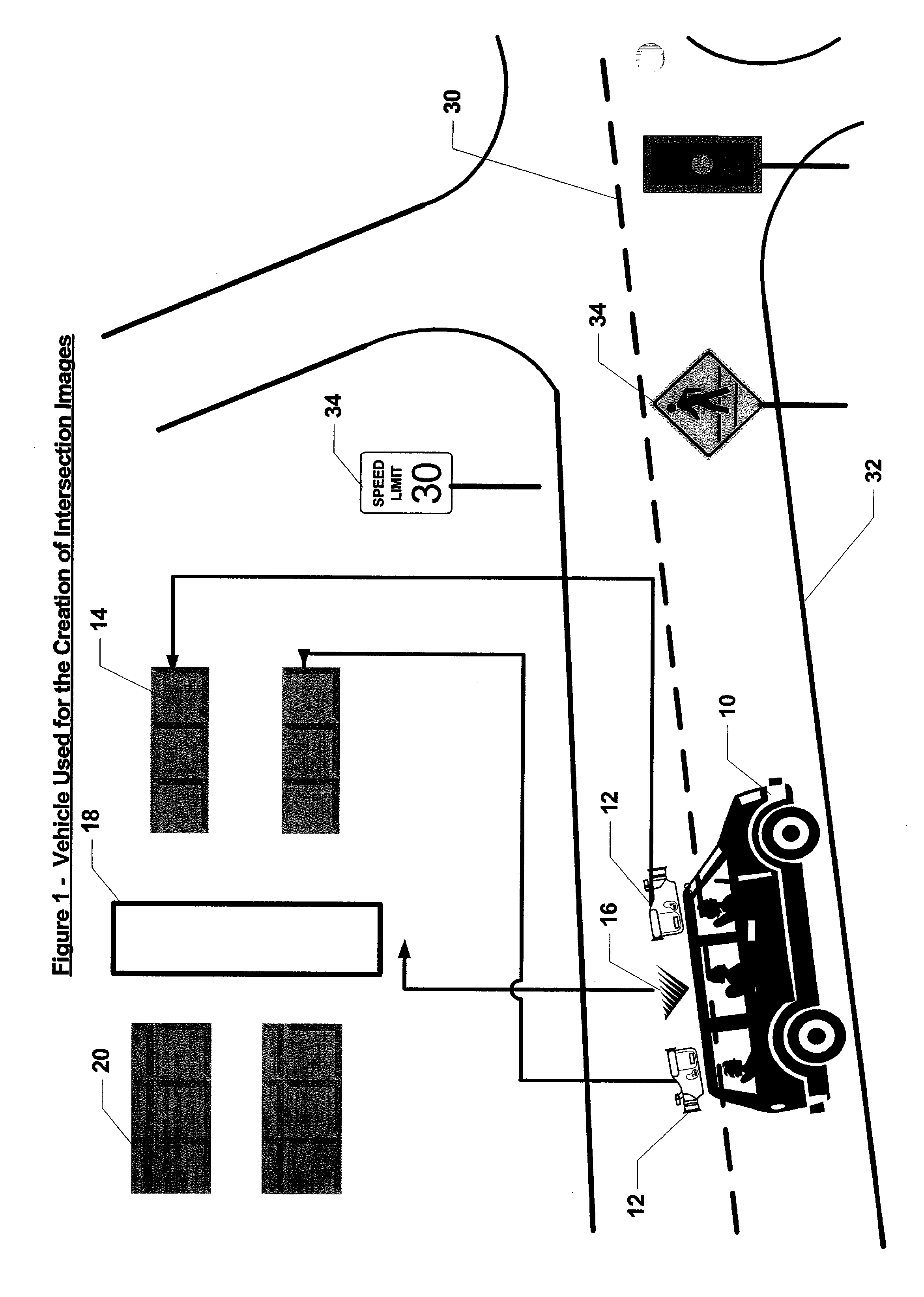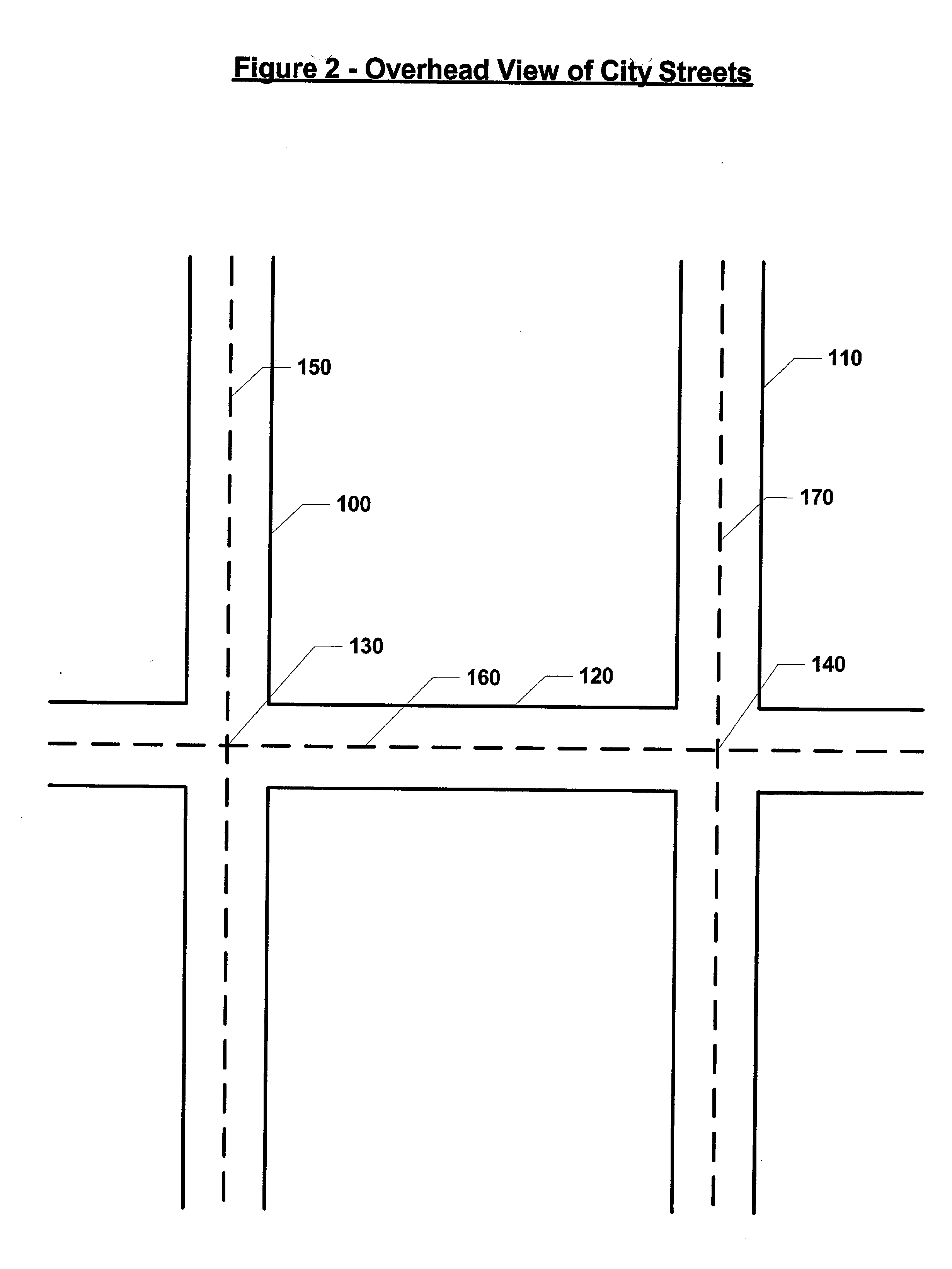System for associating pre-recorded images with routing information in a navigation system
a navigation system and pre-recorded image technology, applied in surveying and navigation, navigation instruments, instruments, etc., can solve the problems of driver confusion, inaccurate distances, poor lighting, etc., and achieve the effect of fewer wrong turns, fewer missed turns, and greater success
- Summary
- Abstract
- Description
- Claims
- Application Information
AI Technical Summary
Benefits of technology
Problems solved by technology
Method used
Image
Examples
Embodiment Construction
[0035] Referring to FIG. 1, a preferred embodiment for how images are obtained and processed as part of the present invention will be described. An acquisition vehicle 10 equipped with one or more cameras 12 generates a series of raw image streams 14 representative of a road or street 32 over which the acquisition vehicle 10 is traveling. For each portion of a roadway system being recorded, the acquisition vehicle 10 is preferably driven in both directions along each road or street 32. In the case of road or streets 32 having multiple lanes in the same direction, imagery may be recorded for each lane. This is preferable in the case of separate left and right turn lanes at intersections. In a preferred embodiment, global positioning satellite (GPS) receiver 16 supplies location information that is combined with the raw image stream 14 by a processor 18 to generate a tagged image stream 20. Alternatively, the tagged image stream 20 may be generated using other types of position indica...
PUM
 Login to View More
Login to View More Abstract
Description
Claims
Application Information
 Login to View More
Login to View More - R&D
- Intellectual Property
- Life Sciences
- Materials
- Tech Scout
- Unparalleled Data Quality
- Higher Quality Content
- 60% Fewer Hallucinations
Browse by: Latest US Patents, China's latest patents, Technical Efficacy Thesaurus, Application Domain, Technology Topic, Popular Technical Reports.
© 2025 PatSnap. All rights reserved.Legal|Privacy policy|Modern Slavery Act Transparency Statement|Sitemap|About US| Contact US: help@patsnap.com



